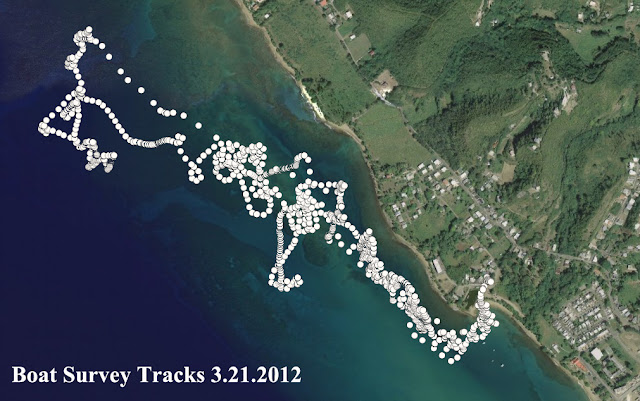Best All Around: Class #2 Best All Around: Class #8
Most Plastic: Class #12 Most Plastic: Class #8
Most Aluminum: multi-class tie Most Aluminum: Class #8
Most Plastic Counted: Class #2 Most Plastic Counted: Class #8
Most Aluminum Counted: Class #2 Most Aluminum Counted: Class #8
If we were to assume that single-use plastics were the only material being recycled in the schools, and the fact that a single-use plastic bottle measures ~8.5", and that 350 single-use plastic bottles fill a 95 gallon container then MASIS has recycled (22 x 350 = 7700 bottles) and JSC has recycled (18 x 350 = 6300 bottles). When we take the amount of bottles recycled for each school and multiple it by the length of a single bottle we get the length of the "bottle-string" the school is compiling and heading on an adventure around the island! The MASIS bottle-string = 1.66 km and the JSC bottle-string = 1.36 km. See the progress of each bottle-string in the image below. Click on the image for a larger view.
Detailed counts per class are seen below.
Contact Wessley Merten at 787-436-8300 or wessley.merten@upr.edu for more information on helping out in this coral reef restoration and marine debris removal effort.























